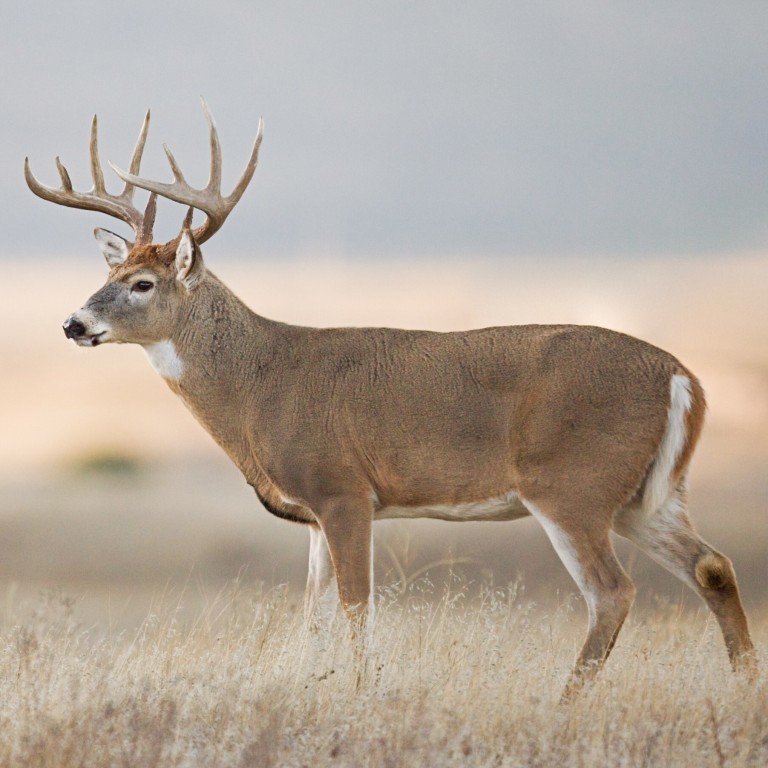
Coronavirus: US scientists suggest another animal link in tests on deer samples
- The discovery could ‘provide baseline information for surveyed populations prior to pathogen emergence’, say scientists
- The USDA says the results, which were tested in two different labs using different methods, ‘likely a false positive’
The researchers discovered three more positive samples dated in January 2020, when the virus was newly identified in China.
These samples were collected “very early in the pandemic” from wild deer populations in different parts of the US, said quantitative biologist Susan Shriner with the National Wildlife Research Centre in a paper posted on the preprint server bioRxiv.org on July 29.
The discovery could “provide baseline information for surveyed populations prior to pathogen emergence”, Shriner and her colleagues said.
The paper has not been peer-reviewed, and the findings were unexpected.
The main purpose of the study was to find out whether humans could pass the virus to wild animals. A large-scale survey conducted by the US Department of Agriculture earlier this year found that nearly half the white-tailed deer in the wild might have contracted the novel coronavirus. In some areas the infection rate reached 100 per cent.
To ensure the accuracy of their testing method, the researchers used some archived samples from as far back as 2011 as controls, and found the results were all negative before 2019.
Many cases of animals being infected with the new coronavirus have been reported across the world, but they were either pets or farm animals that lived near humans, and only tested positive after Covid-19 was detected in people.
WHO calls for ‘spirit of partnership’ in hunt for Covid-19 origins
Shriner and her colleagues sent their samples to another government laboratory that ran tests with a different method. The results were consistent.
In a statement posted on its website, the USDA said the sample in 2019 was “likely a false positive”. However, Shriner’s paper made no such a statement. She did not respond to a request from the South China Morning Post for comment.
The origin of the pandemic remains a puzzle, and many theories have been proposed.
Most scientists say Covid-19 came from nature but evidence of the early history of the virus’ evolution remains scarce.
A host’s immune system produces many types of antibodies after an infection. Some remain in the body long after the virus has disappeared. Shriner and her colleagues were looking for the presence of a specific antibody that could neutralise Sars-CoV-2, the virus that causes Covid-19.
The antibody testing is not perfect. Sometimes the antibody caused by the infection of one type of virus interacts with another virus, although the effect can be relatively weak. To keep the risk of false positives at a minimum, the US Food and Drug Administration requires that a positive result can be announced only when a blood sample neutralises 30 per cent or more of the viral particles in the test.
Hunt for Covid-19 origins: questions surface over China’s animal testing
The neutralising rate of the 2019 sample reached just over 30 per cent, leaving room for debate on its certainty. Nonetheless, some other positive samples collected in 2020 and 2021 were also found close to that range.
The researchers pitched the deer samples against artificial viruses carrying the same spike proteins as that of Sars-CoV-2. They also tested them with real viruses collected from humans. These tests yielded similar results.
The study was based on more than 600 samples, with most collected this year. Although the US team did not discuss the origin of the virus, the paper has caught attention in China.
The sample in 2019 was important because scientists had not previously found a similar infection in wild animals. The white-tailed deer could provide useful evidence on how the virus jumped from animals to humans, said the unnamed expert.
A neutralising antibody test had higher accuracy than commercial antibody tests. The requirement for a positive result was so high that even the blood samples of some Covid-19 patients could turn up as negatives, according to the government expert.
China tightens laboratory animal rules amid calls for Covid-19 lab-leak probe
A virologist based in Kunming in southwestern Yunnan province who has studied coronavirus antibodies, said the 30 per cent neutralising rate was not high, but only a few samples in the US government archives were tested. More testing was needed to produce more convincing results, said the researcher who asked not to be named because he was not authorised to speak to the media on the topic.
Wild deer had not received much attention before, as most studies focused on bats or domestic animals such as cats, but some recent studies suggested the white-tailed deer could be a possible host, the virologist said.
“Testing deer is not enough. It is also necessary to test the archived blood samples of residents living nearby to help answer some important questions, such as whether there were some early transmissions between wild animals and residents that made the virus more adaptive to humans,” the virologist said.

